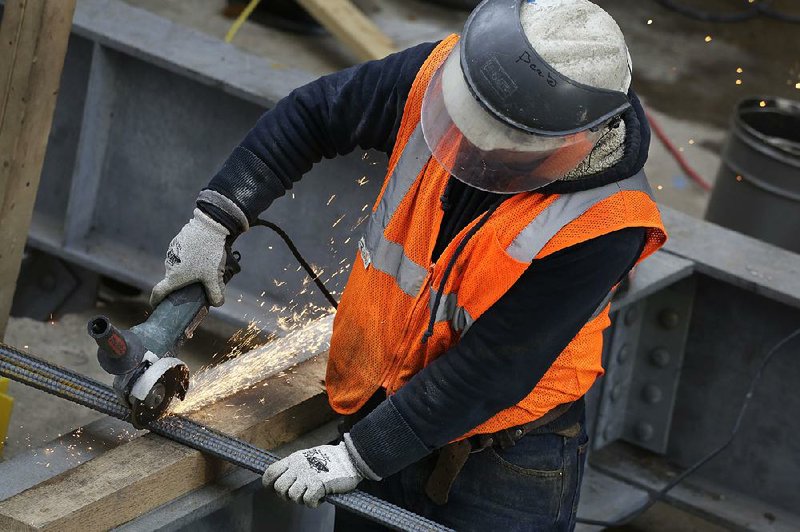WASHINGTON -- U.S. construction spending rebounded slightly in December, helping push total spending for 2015 to the highest level in eight years.
Construction spending increased 0.1 percent in December after falling in October and November, the Commerce Department said Monday.
The December increase was driven by gains in home construction and spending on government projects. That offset declines in spending on private construction of shopping centers, office buildings and hotels.
For all of 2015, construction jumped 10.5 percent to $1.1 trillion, the highest total since 2007.
A home construction boom peaked in 2006 before falling for the next five years. Construction spending has been climbing since 2012. Economists believe building activity, fueled by home construction, will bolster the overall economy this year.
Home construction was a bright spot in the fourth quarter, growing at an annual rate of 8.1 percent in the October-December period. That was one of the best showings for any major category.
The overall economy, as measured by the gross domestic product, grew at an annual rate of 0.7 percent in the fourth quarter. Economists are looking for stronger growth of around 2.5 percent in the current January-March period.
For December, home construction advanced 0.9 percent, while nonresidential construction fell 2.1 percent. Spending on state and local government projects was up 2.3 percent, but spending on federal building projects fell 3.3 percent.
For all of 2015, home construction rose 12.6 percent, while private nonresidential activity was up 12 percent. This sector was strong for most of the year, but it has declined in three of the past four months. Spending on state and local building projects rose 6.1 percent in 2015, while spending on federal projects was up a smaller 0.7 percent.
Household spending cooled in December as Americans used gains in incomes to add to their savings.
Consumer purchases were little changed after a 0.5 percent advance in November that was bigger than previously estimated, Commerce Department figures showed Monday. The Bloomberg survey median forecast called for a 0.1 percent increase. Incomes climbed 0.3 percent for a second month.
Household purchases moderated in the fourth quarter, contributing to a slowdown in the economy as businesses worked to pare down inventories. A spending rebound, powered by sustained job gains and low inflation, will be needed to reinvigorate growth in the coming quarters.
"Momentum was not great going into the beginning of this year," Brett Ryan, a U.S. economist at Deutsche Bank Securities Inc. in New York, said before the report. "Our concern is that with other sectors really not doing much, a lot is riding on the consumer. Our hope is that spending does rebound."
Factory activity in the world's two biggest economies -- the United States and China -- slowed in January, a discouraging trend for the global economy.
U.S. factory activity shrank in January for a fourth straight month as a strong dollar and weak demand overseas pinched American manufacturers, the Institute for Supply Management said Monday.
The Institute for Supply Management's manufacturing index ticked up to 48.2 from a revised 48 in December, but any reading below 50 signals a contraction. The index has remained below 50 since September.
U.S. factory exports and employment fell in January, though new orders and production grew for the first time since October.
"Yet another sub-50 ISM print remains consistent with our view that there is little to suggest a turnaround in [manufacturing] in the near future," Derek Lindsey, economist at BNP Paribas, wrote in a research note.
Information for this article was contributed by Martin Crutsinger and Paul Wiseman of The Associated Press and Victoria Stilwell of Bloomberg News.
Business on 02/02/2016
